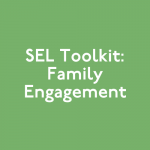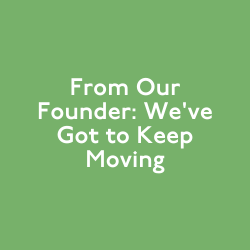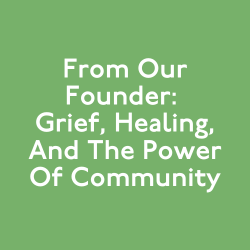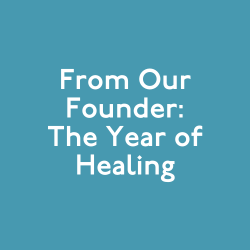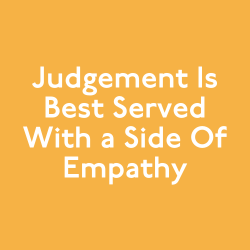Written by Founder and CEO, Sara Potler LaHayne
At my contemporary dance class, we often split up into small groups. Last night was no different. But suddenly, as we danced to the teacher’s choreography, he stopped everyone to provide these words of wisdom.
“In this piece, there are inhale moments, and there are exhale moments. You have to know when to do which, and make sure you give the proper space and attention to each.”
As I focused on my breathing during the choreography, I realized the same advice applied to everyday life.
There are inhale moments, and there are exhale moments. There’s a purpose and function for each inhale and each exhale, and we need to make space for them both. One cannot exist without the other. By intentionally inhaling and exhaling, we make each move more full, more deep, more expressive, more alive.
The question is, how can we make space to intentionally breathe every day? We don’t always have a stage where our breath is what helps drive our performance, but breath is what drives our ability to function and thrive every day.
In fact, it’s not only critical for our everyday lives, but for our long-term health as well. According to Harvard Medical School, our daily reactions to stress can build up over time and cause serious heart problems. The solution is to develop a relaxation response to stressful activities, such as sitting in traffic, relationship problems, financial or job concerns — and almost every relaxation response involves deep breathing in some way.
The benefits of deep breathing don’t end there. Deep breathing can also benefit our immune system, memory, and metabolism. The New York Times found that deep breathing can reduce anxiety, insomnia, post-traumatic stress disorder, depression and attention deficit disorder. According to Psychology Today, the impact of deep breathing is so powerful that veterans of the Iraq war who felt “dead” reported feeling alive for the first time since their return following a six day breathing workshop.
The challenging thing is that we usually don’t have a dance coach interrupting our routine with timely advice about when to breathe. That means we have to hold ourselves accountable.
Here are four ways we can do exactly that:
1) Just Breathe. Take three mindful breaths, counting to eight for each inhale AND eight for each exhale.
2) Nose Goes. Breathe in through the nose and out through the nose. Try to keep your lips sealed.
3) In with the good, out with the bad. Inhale a positive thought, and exhale a negative thought. Do that three times. Make sure you inhale long enough to identify your positive thought in your mind and say it to yourself. The same goes for your exhale.
4) Focus on your belly. Belly breathing involves full breaths where you deeply inhale and exhale . Most people make a habit of thoracic breathing, or shallow breathing, which only uses the upper chest muscles. Belly breathing more fully supplies your body with the oxygen it needs.
These four breathing techniques aren’t quite as timely as exhaling exactly when we need to during our dance routine. But performing these rituals regularly will help us prepare for the moments when we really need it. After a few weeks of routine practice, don’t be surprised to find yourself exhaling negative thoughts or making sure your belly is full of oxygen when you are feeling anxious.
It’s important that we don’t just go through the motions with our breathing. Being intentional about our breathing is important because breathing has an impact on our emotions. Similarly, our emotions affect our breathing. When we breathe in a specific way, we can change our state of mind and put ourselves in a better position to tackle the challenges ahead.
Just like we exercise other skills, breathing is critical to practice. Understanding how to use different breathing techniques and how they make our body feel is crucial to knowing when to use them.
It also helps to check your environment. I found that when I sit at my desk for too long, my back starts to slouch and my breaths become shorter. Once I noticed that trend, I started using my stand-up desk regularly.
I’ve also found that my phone or laptop can trigger a downward spiral of anxiety and negative emotions. Sometimes I am caught off guard by one of the hundreds of emails to hit my inbox every day, or remember one of the many items on my never ending to-do list that I forgot to do that day.
Suddenly, my heart is pumping. Sometimes, I even start pacing. At times like those, it’s almost impossible to control my breathing unless I am very intentional. That means stepping away from my laptop and putting my phone away. Nine times out of ten, whatever it is can wait. Plus, I know I’ll be in a better place to focus in a calm state of mind.
At the end of the day, we can only control our bodies and how we react to what’s going on around us. It’s easy to get swept up in our environment, with endless tasks, notifications, and advertisements fighting for our attention. It’s easy to let those things take over our emotions. But if we focus on our breathing, all of that will melt away, and we’ll be left with what is truly important.

